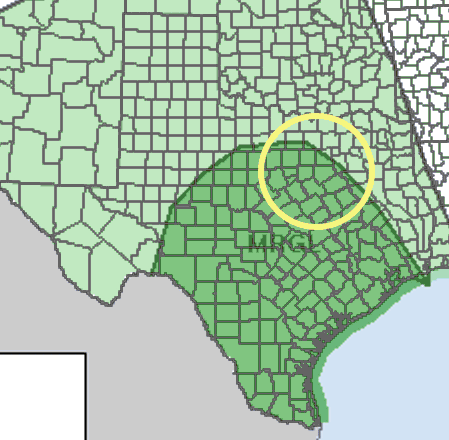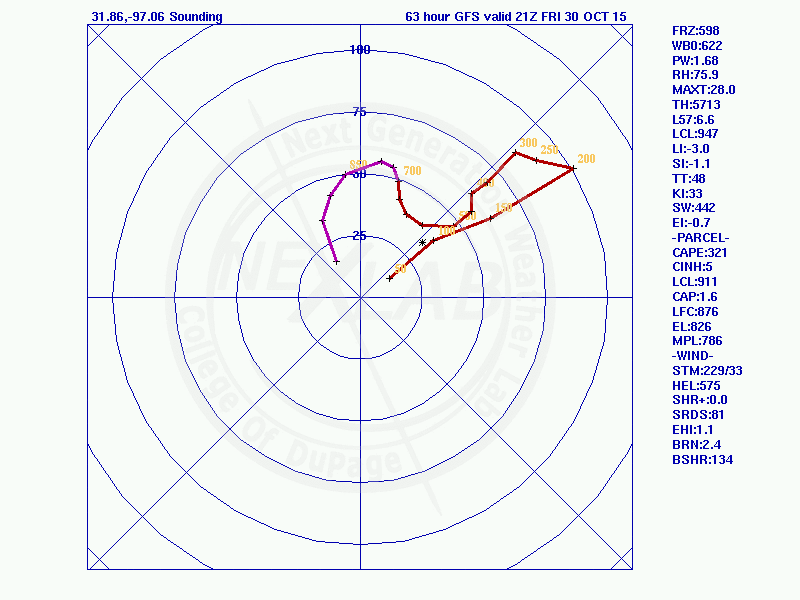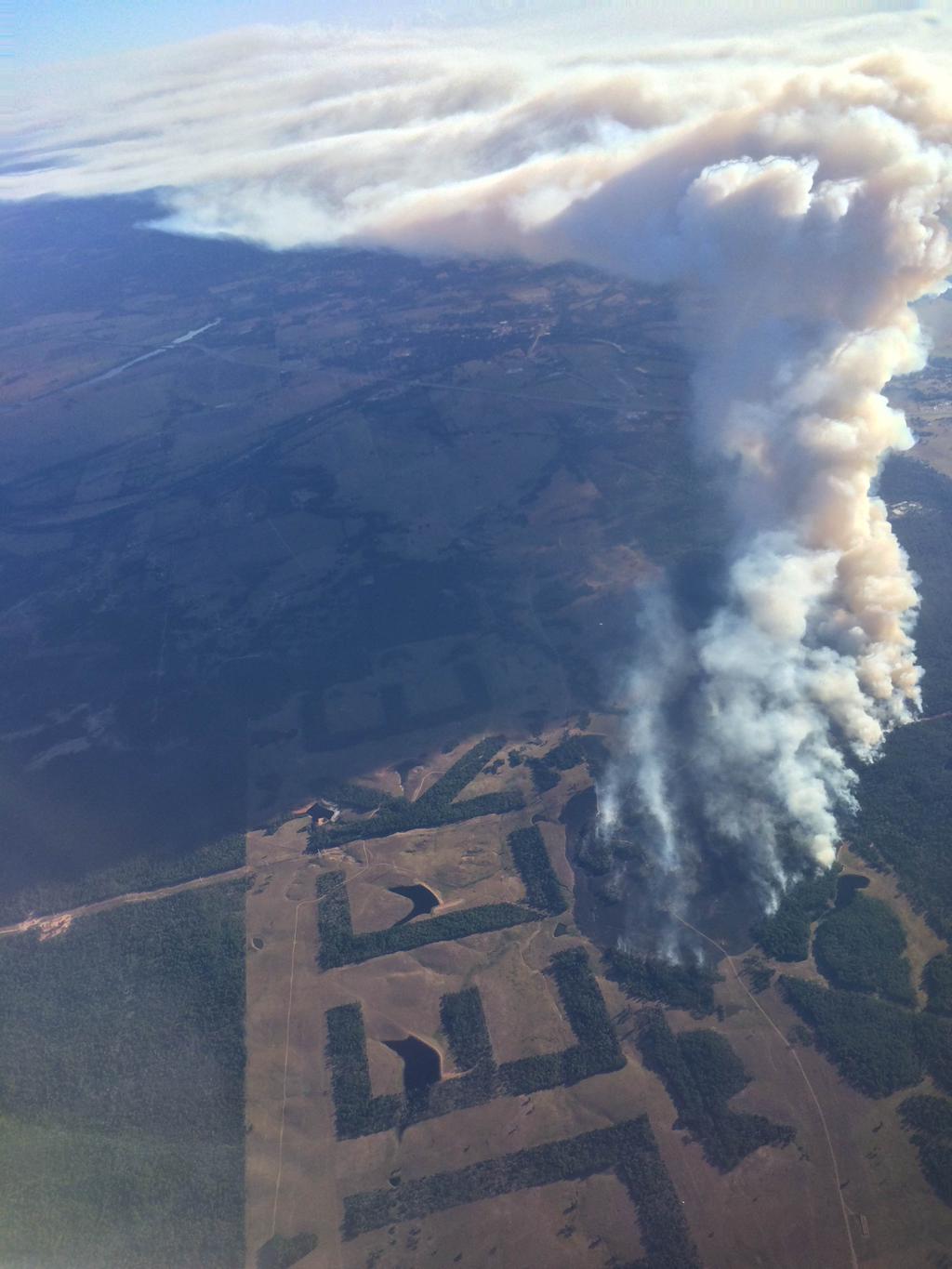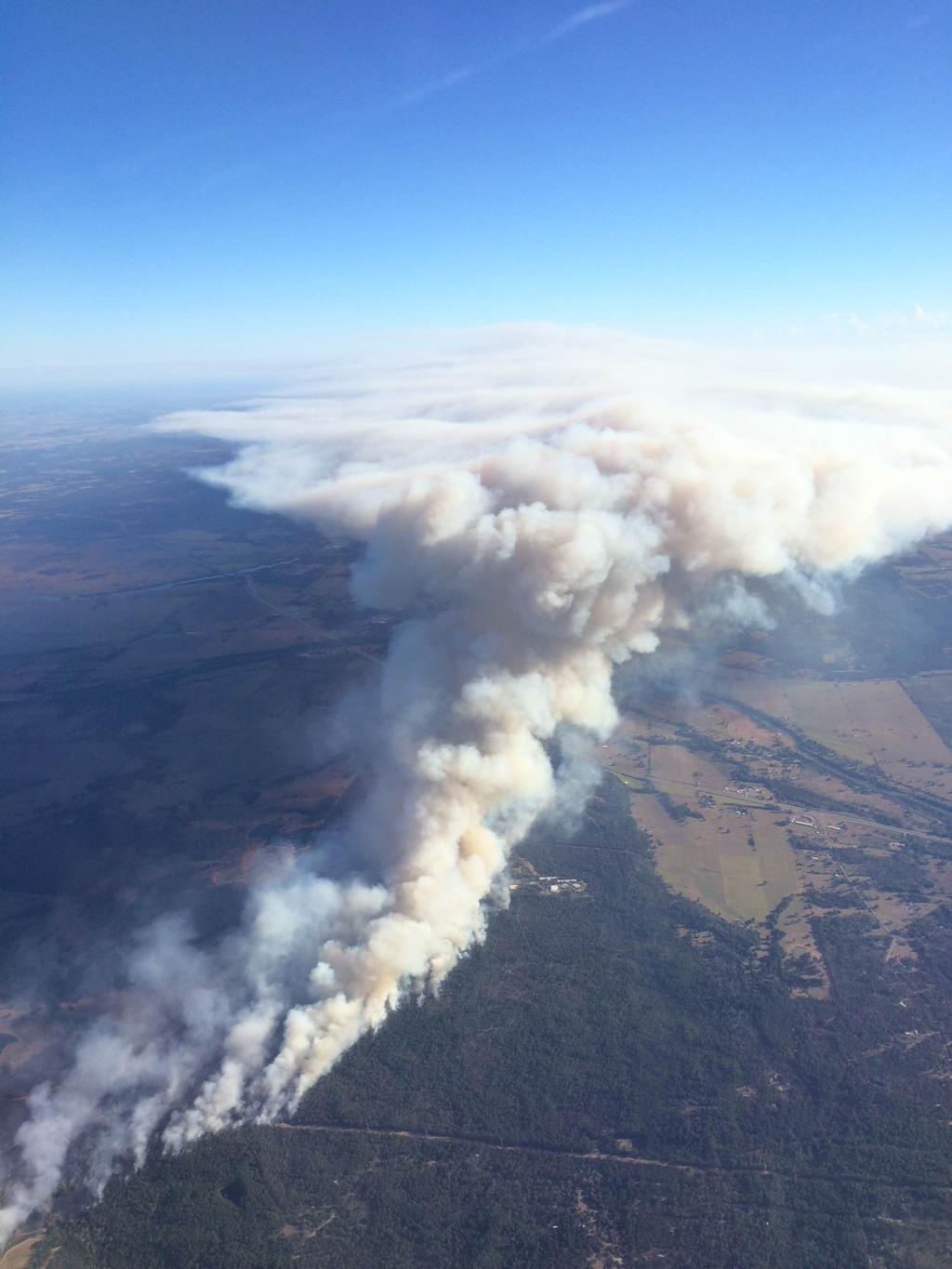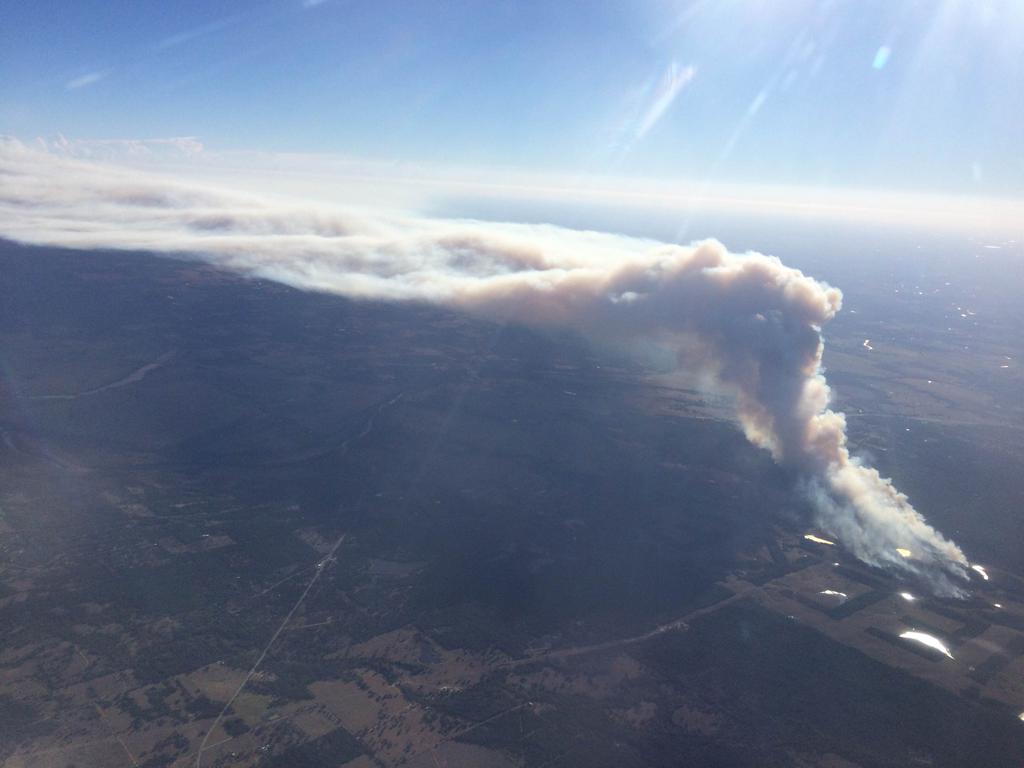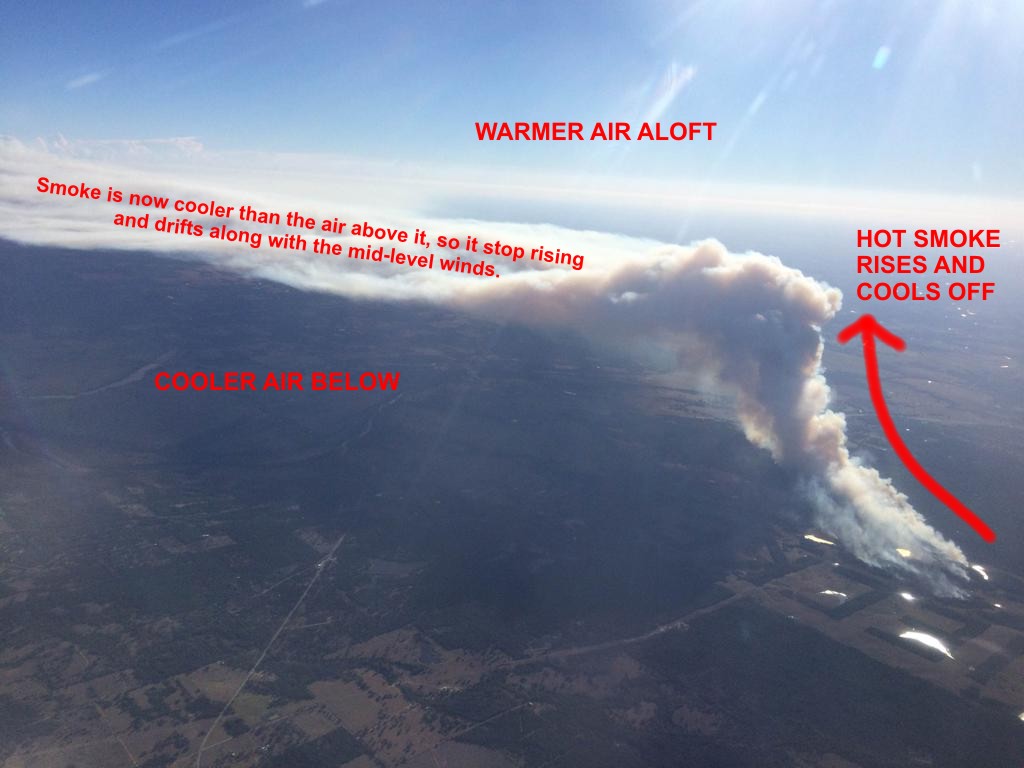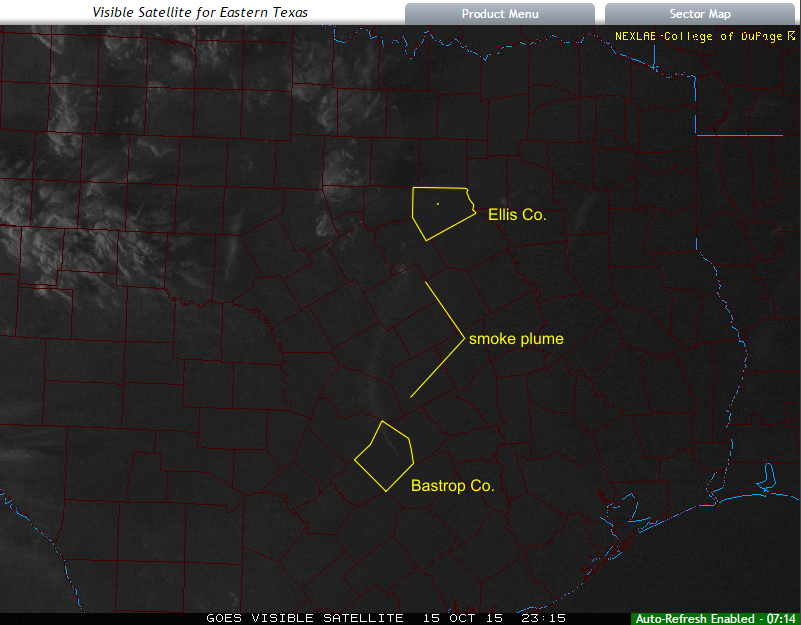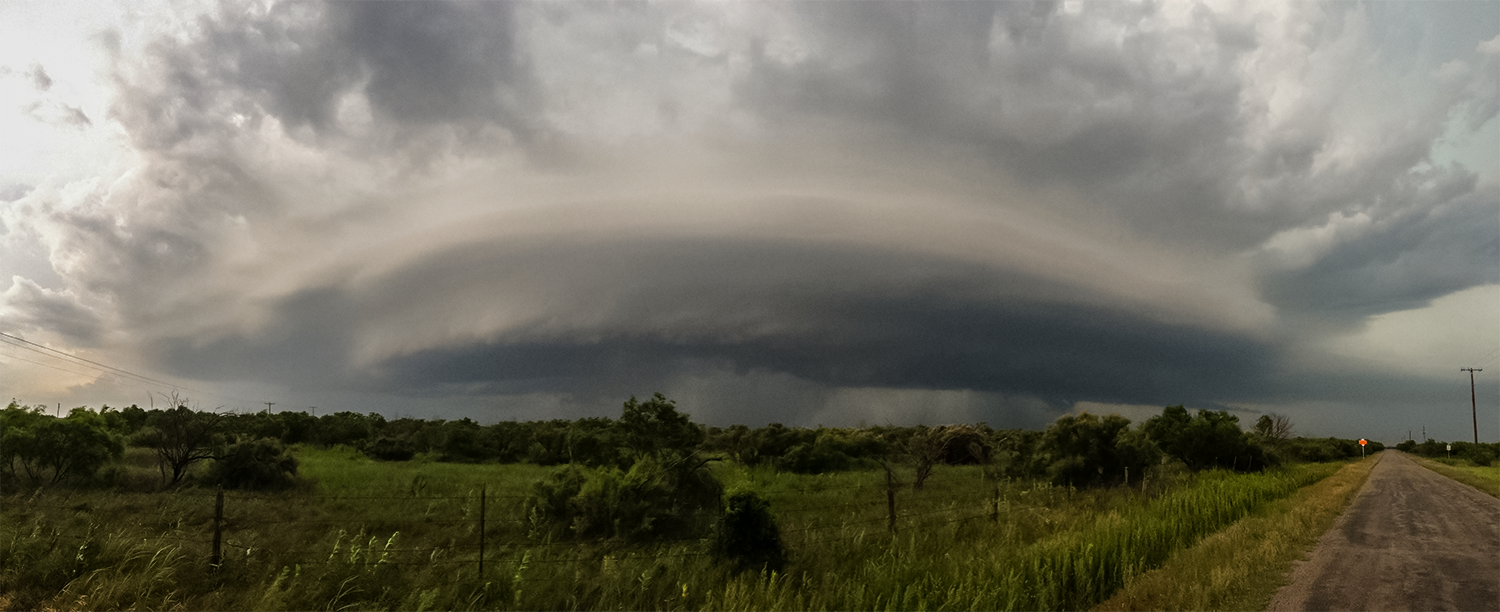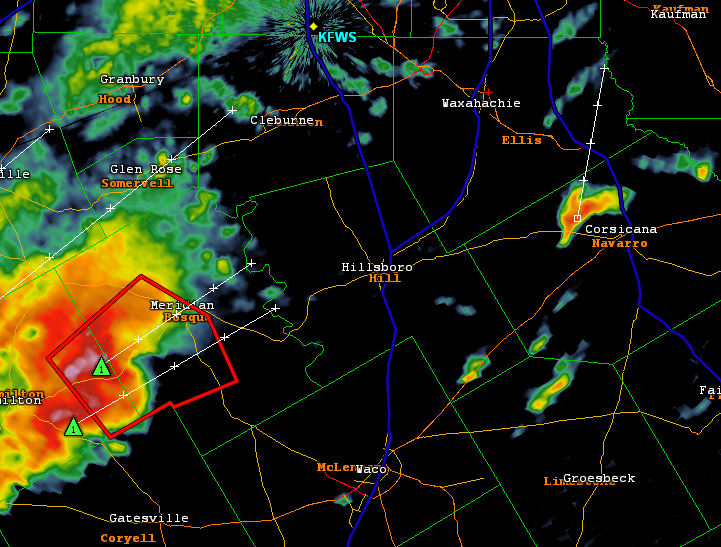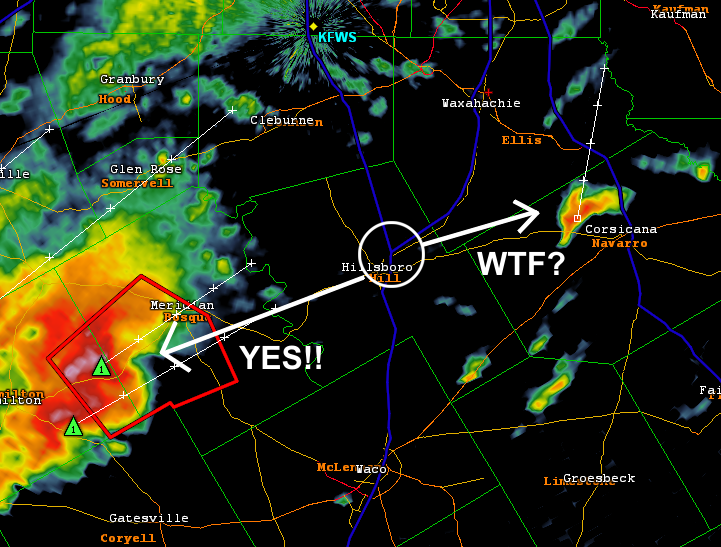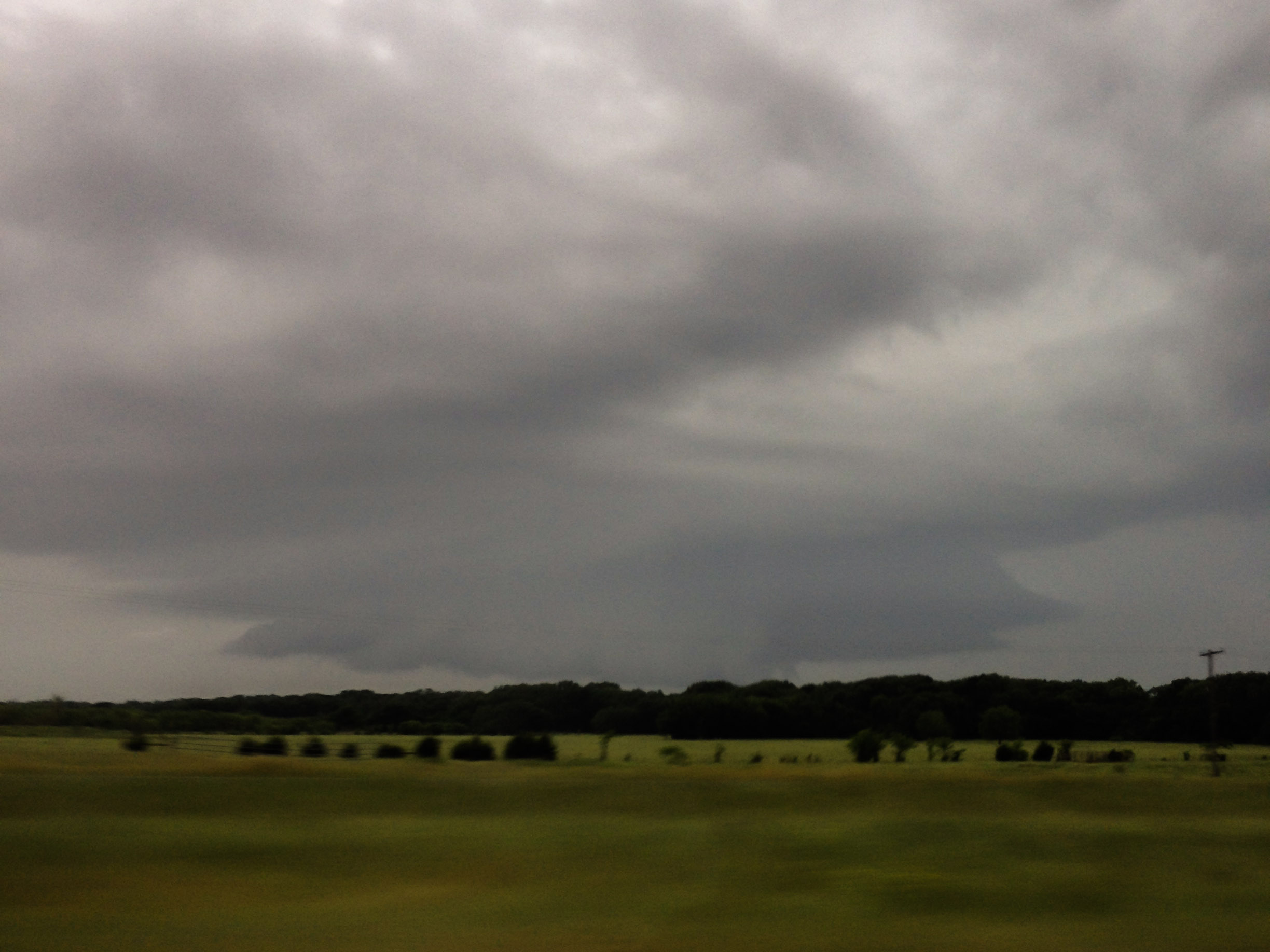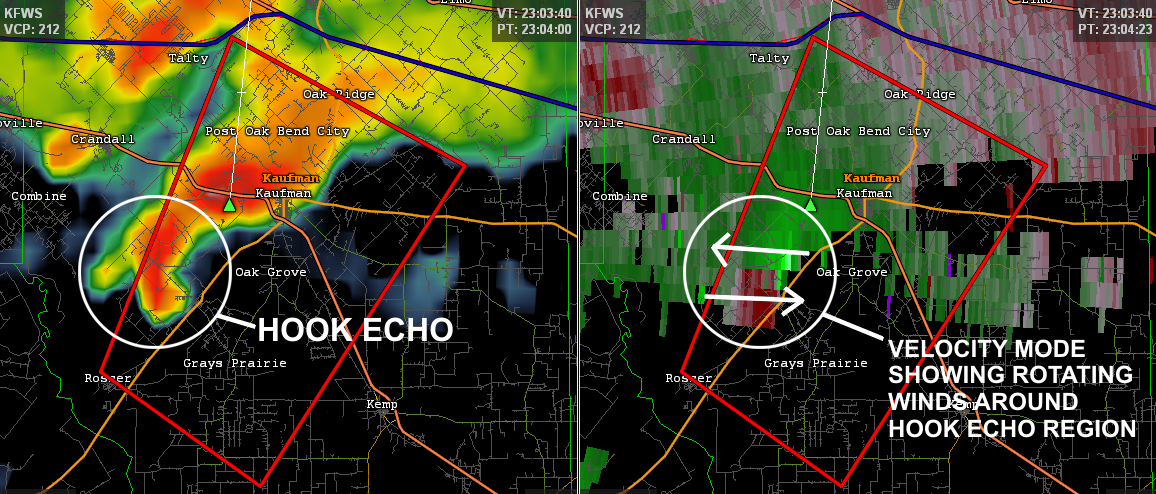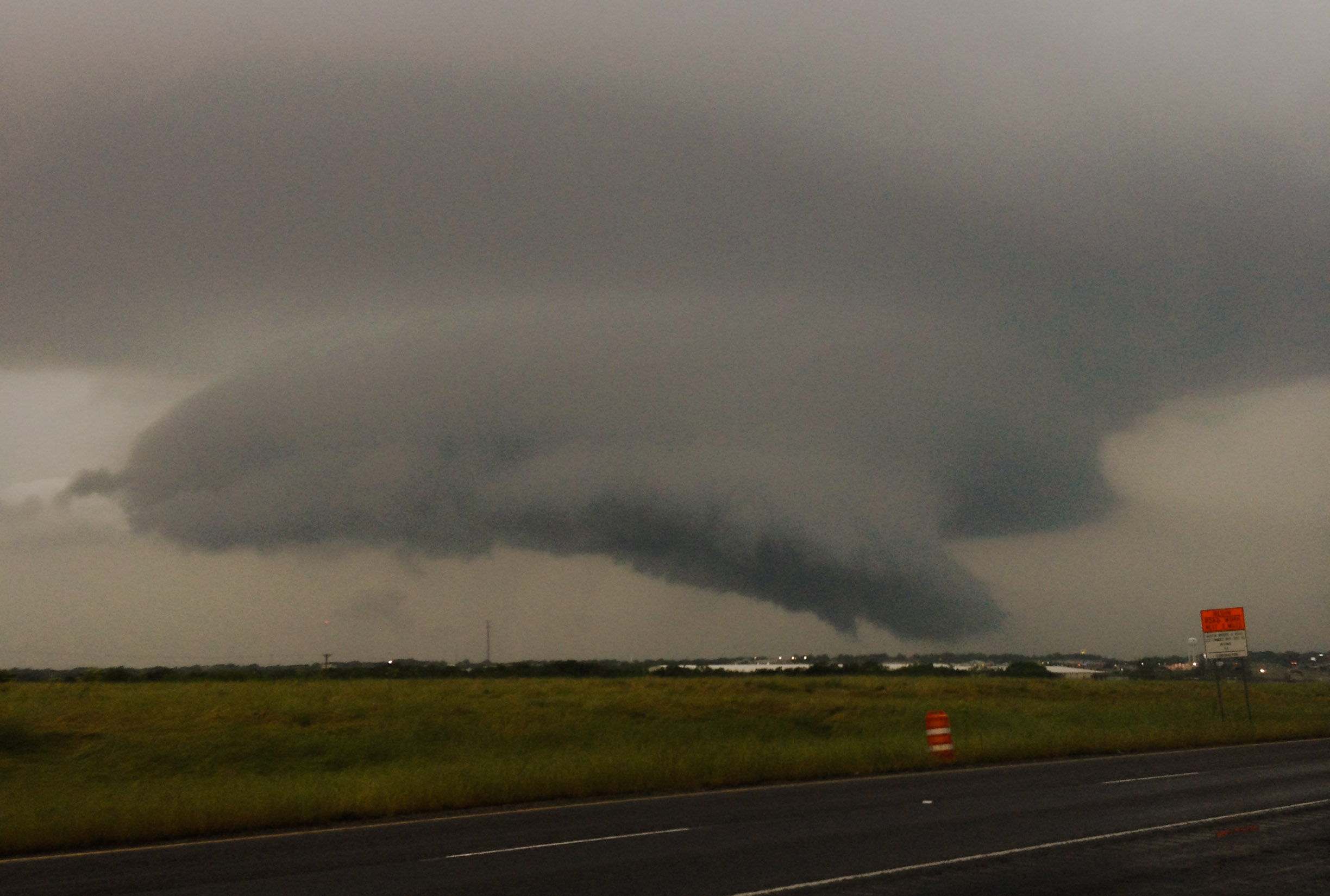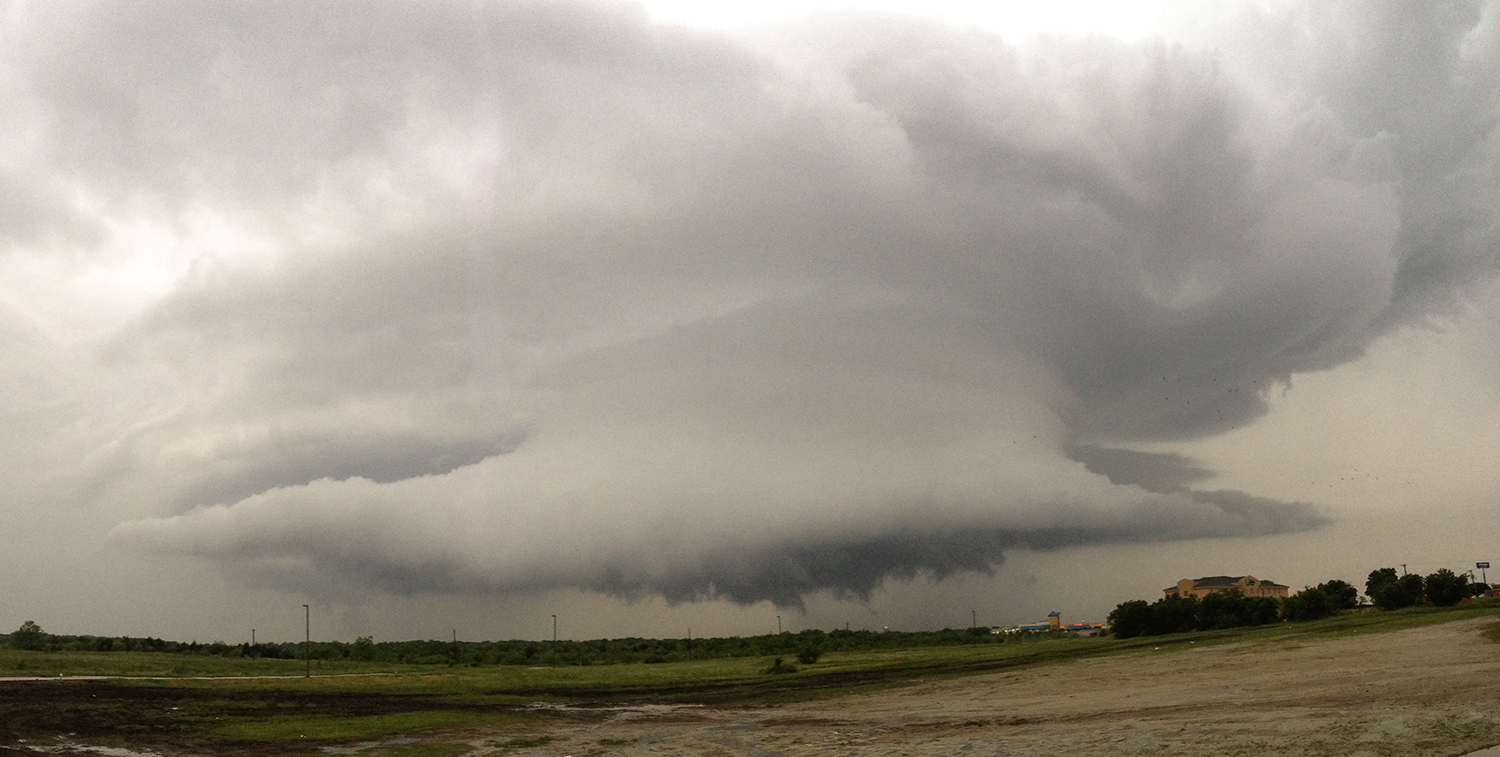The SPC indicated that higher risk levels may be warranted on later updates so I went to bed knowing that later that day would be a chase day. Sure enough, the 13Z update placed much of the north Texas region into the ENHANCED RISK area - with a 10% probability of tornadoes!
Model forecasts looked really good for west of the DFW metroplex, so around 11AM, we took off and headed toward Weatherford, TX. Since I bring my family on chases (yes, even the kids!) we ended up stopping a Chick-Fil-A in Weatherford to eat and assess the progress of the weather. Storms were already forming west and north of us ahead of the cold front, but with it being relatively early in the day (about 12:30 PM), we were hoping to catch some of the discreet cells that were forecast to form well east of the front itself. These had the best chance to become severe and even produce tornadoes - so we waited and waited while the kids played in the playland. At 12:35, the SPC issued a tornado watch for our area.
I knew that just because a watch was issued, that didn't mean that storms would be forming instantly. So we decided to give the kids some extra time to play and burn off some energy. On a side note, this was really the first chase where we were in our target area before storms were actually forming - so it was kind of an odd experience. All previous chases have been just that - CHASES. In other words, the storms were already in full force when we decided to go after them. In this case, I made an educated guess on where the storms were likely to form and we went there. But I was wrong. VERY WRONG. As we were monitoring the radar, a few lines of storms began forming south of the DFW metroplex (not west like were we were). Giving into my impatient nature, we packed up the kids and headed back east.
By the time we got south of Fort Worth, tornado warnings were already being issued - for storms even FURTHER east of us. DANG! I was beginning to get mad at myself, but trying to stay optimistic, continued heading south. More storms were forming and I was hoping to catch one and follow it. We continued even further south - into Hillsboro - where we stopped for a quick ice cream pit stop and to pause briefly to look for other targets. By this time there were multiple tornado warnings to our north and east - but due to the speed of the storms, they were much too far out of our reach. And here was the ironic part: we left the area west of the metroplex to go to storms forming south. But when we got there, all the storms in the area had died out, but storms were beginning to form in the place where we JUST LEFT. GAHH!! Talk about bad decisions! Not willing to give up, we consulted the radar once more. Storms were continuing to form south of us so we gave in and headed toward them - where we eventually hit Waco! Yes, Waco! Please keep in mind that Weatherford to Waco is about 112 miles!! To make matters worse, tornado warnings were consistently being issued to our north and east, but heading up there at this point would have been futile.
After gassing up, we noticed we had a decision to make. There was a larger cell southwest of Waco (near Temple, TX at the time), and also some smaller cells to our south east. We ended up choosing the latter (Temple seemed WAY to far to go) and headed east on US-84. The speed of these storms was really something we underestimated and we ended up missing the closest one to us after heading east for only a few miles. Undeterred, we made our way north on some Farm-to-Market roads where we eventually found ourselves back in West, TX and eventually got back onto I-35 heading north. This ended up being just what we needed as we were now matching the northward speed of the storm we missed previously AND it looked on radar like it was beginning to strengthen!
By the time we got to Hilllsboro, I had a gut feeling that this storm was getting ready to do something and at 4:33 PM, shortly after we got onto I-35E, the storm went tornado warned. Looking at the track of the storm and the direction that I-35E takes after the split at Hillsboro, it looked like we'd literally intercept it along the interstate. Between the cities of Carl's Corner and Milford, we ended up slowing way down and pulling over to let to storm pass in front of us. When it was safely past, we continued the northward race. By the time we approached Milford, the hook echo was nearly in front of us. Note our position (blue circle) in relation to the "hook".
Further up the road - around Italy - is when the hook echo was to our west and we were able to really make out a distinct wall cloud. Again, note our position relative to the hook.
Here's the wall cloud around the same time as the above image.
As I was driving, I couldn't really tell if the wall cloud was rotating or not, so wanted to pull off the road and see. I was coming up on the exit for US-77 and being familiar with the area knew that there was an overpass I could cross the interstate and get a good view of the storm. Here's what I saw....
There were a number of cars all lined up along the service road checking out the same thing. I only stayed a minute or two so that I didn't lose pace with the storm. I didn't see any visible rotation even though the whole thing was rotating on radar so after taking this and a few other photos, I jumped back into the car and got back on highway heading north. A few exits up the road I managed to get this shot as the wall cloud came close to crossing i-35E.
We continued to keep pace with the storm until we nearly reached Red Oak, TX. Shortly thereafter we called off the chase and headed for home because it was getting to dark for me to comfortably continue.
A number of my storm chaser pals (who have way more experience than I do) had continued to track this storm after dark to Ovilla, TX - just northwest of my home - where they had visual confirmation of a tornado. This particular storm damaged or destroyed over 100 homes in the area.
[12/29 UPDATE]
When I originally wrote this article I was mistaken and said that the Ovilla, TX tornado went on to do damage in the Garland/Rowlett areas. This, however, wasn't the case. You see, there were, in fact, 2 tornadic supercells moving along parallel tracks. The eastern storm was the one I chased and the western storm was the one that my chaser pals were on. This western storm was the one which did damage in Ovilla, then went on a direct path for Dallas. However, it was the eastern storm which actually strengthened and went on to hit Garland/Rowlett.
Please check out this graphic, courtesy of Steve McCauley...
As of the writing of this article, 11 people have already been confirmed dead and I fear that this is only the beginning. Photos of utter devastation had been pouring in via social media all night. It wasn't until the next day when news crews displayed the full picture. (Photos courtesy of news stations via Twitter).
Yes, chasing is fun and thrilling, but the downside is that tornadoes ARE dangerous and wreak all kind of havoc in populated areas. Add to the mix that that they stuck the day after Christmas - at night - and my heart just goes out to all involved. So, while our particular chase this evening ended up being personally successful, it pales in comparison to those who have suffered at the hands of mother nature. We should all pause and say a prayer for those who have a long road of rebuilding and healing ahead. May God bless Texas!
-Andrew













.gif)
